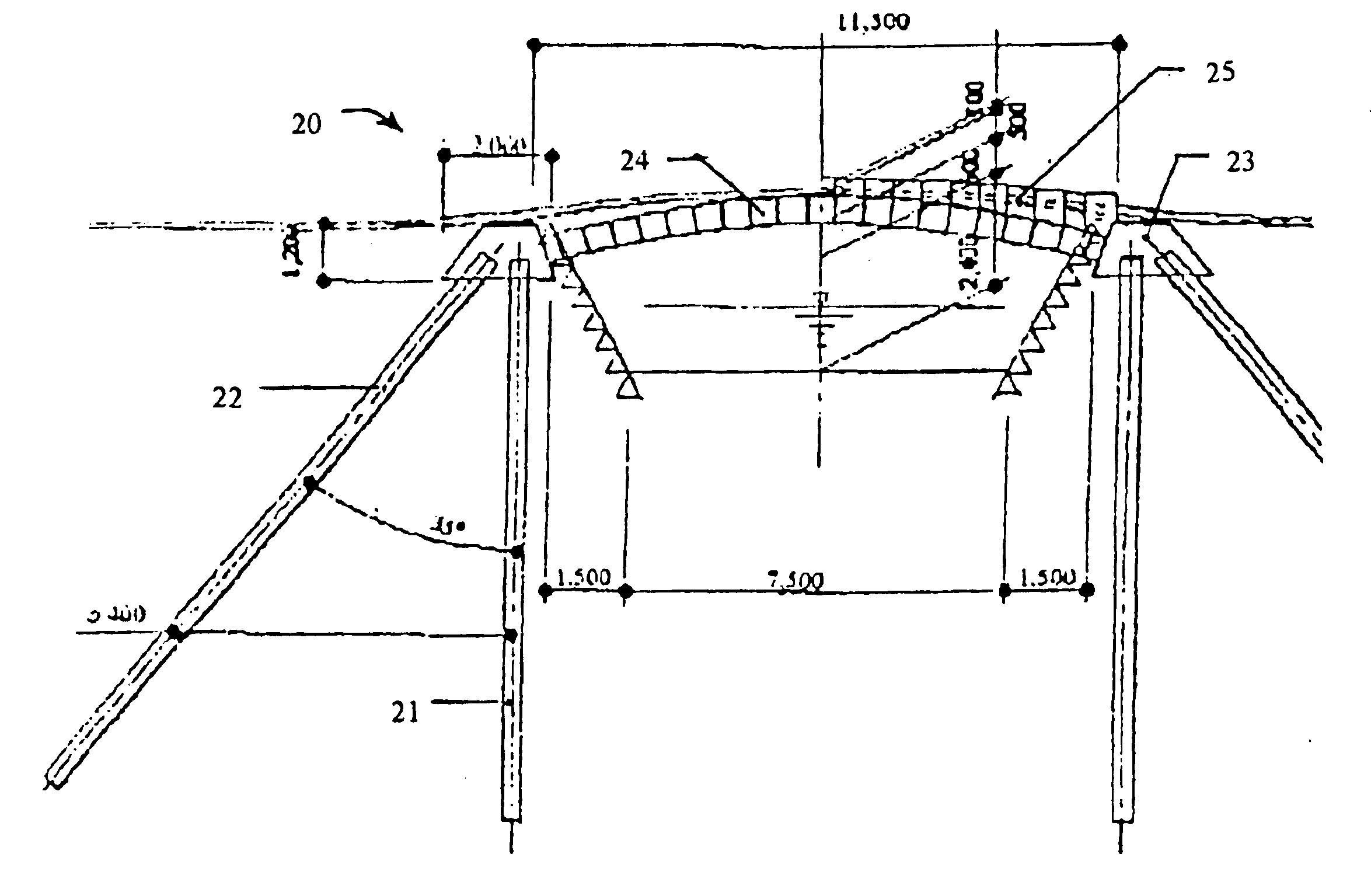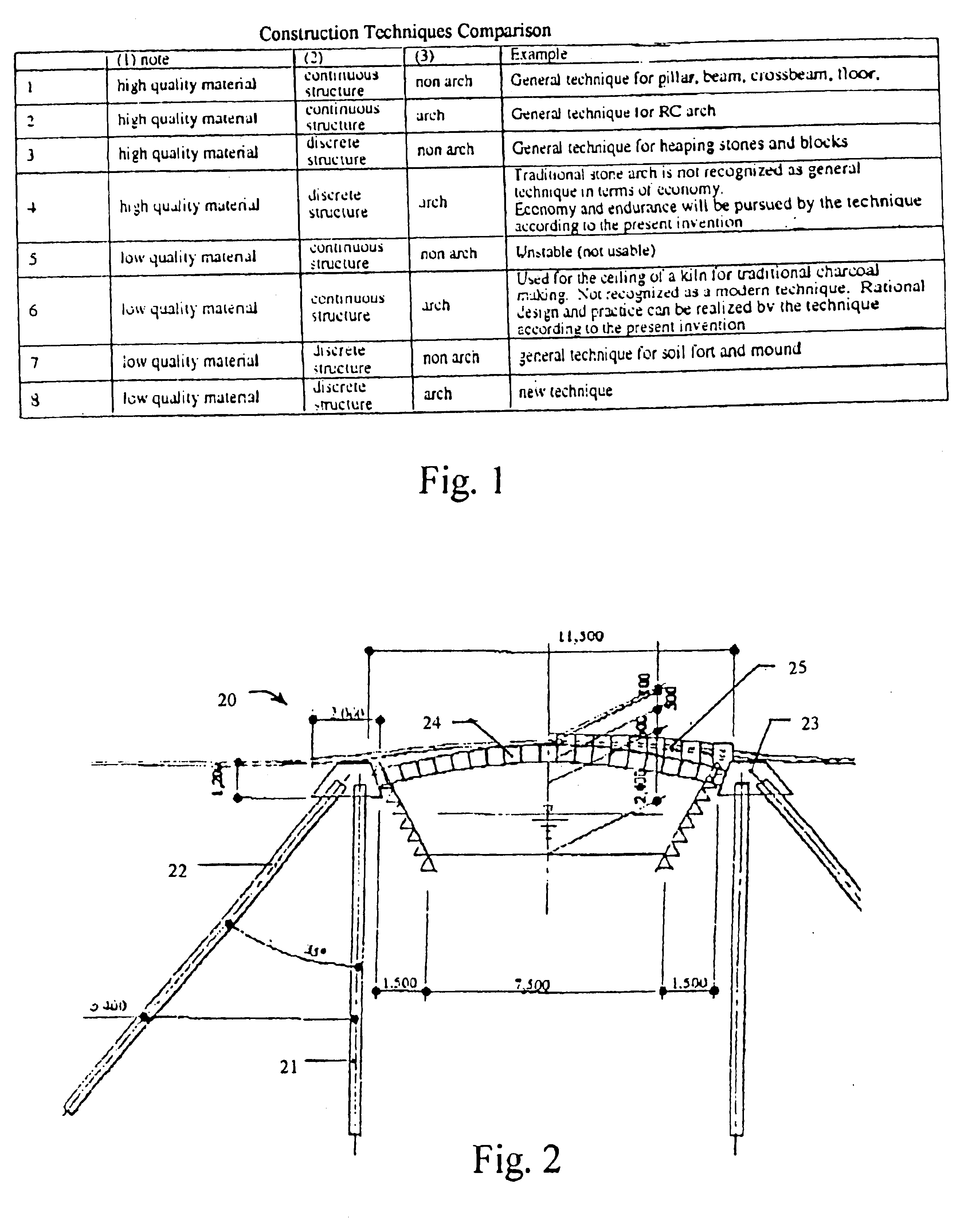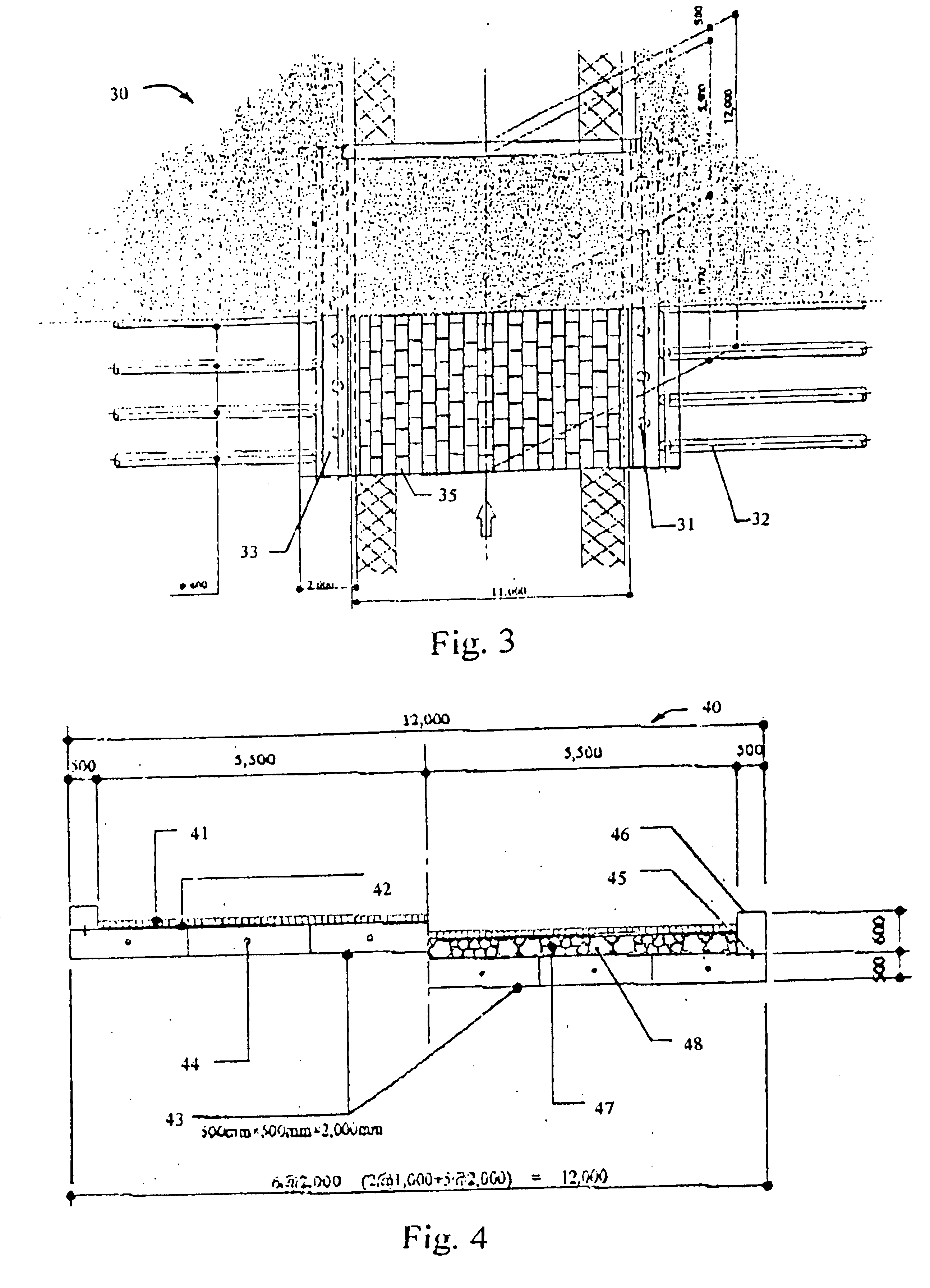Manufacture and use of earthquake resistant construction blocks
- Summary
- Abstract
- Description
- Claims
- Application Information
AI Technical Summary
Benefits of technology
Problems solved by technology
Method used
Image
Examples
Embodiment Construction
Continuous material, such as poured concrete, is primarily used for construction work. Discrete preformed structures are not widely used and their use is often avoided. It has been found that due to the unusually large compression that cut stone blocks can withstand, materials that are routinely discarded or used for ballast or other non-construction purposes, because of their reduced strength, can be used to manufacture blocks or discrete structures that can be substituted for stones. Forming the blocks or discrete structure by packing the reduced strength material pieces into firm contact with each other, and using mortar to hold the pieces in contact, the blocks can be used in place of cut stones. It has now been found that these blocks have good resistance against earthquake damage due to their ability to absorb and dissipate vibration and shock energy.
The differences between the techniques are shown in FIG. 1 and the following discussion has reference to the chart of FIG. 1. Re...
PUM
| Property | Measurement | Unit |
|---|---|---|
| Length | aaaaa | aaaaa |
| Circumference | aaaaa | aaaaa |
| Circumference | aaaaa | aaaaa |
Abstract
Description
Claims
Application Information
 Login to View More
Login to View More - R&D
- Intellectual Property
- Life Sciences
- Materials
- Tech Scout
- Unparalleled Data Quality
- Higher Quality Content
- 60% Fewer Hallucinations
Browse by: Latest US Patents, China's latest patents, Technical Efficacy Thesaurus, Application Domain, Technology Topic, Popular Technical Reports.
© 2025 PatSnap. All rights reserved.Legal|Privacy policy|Modern Slavery Act Transparency Statement|Sitemap|About US| Contact US: help@patsnap.com



